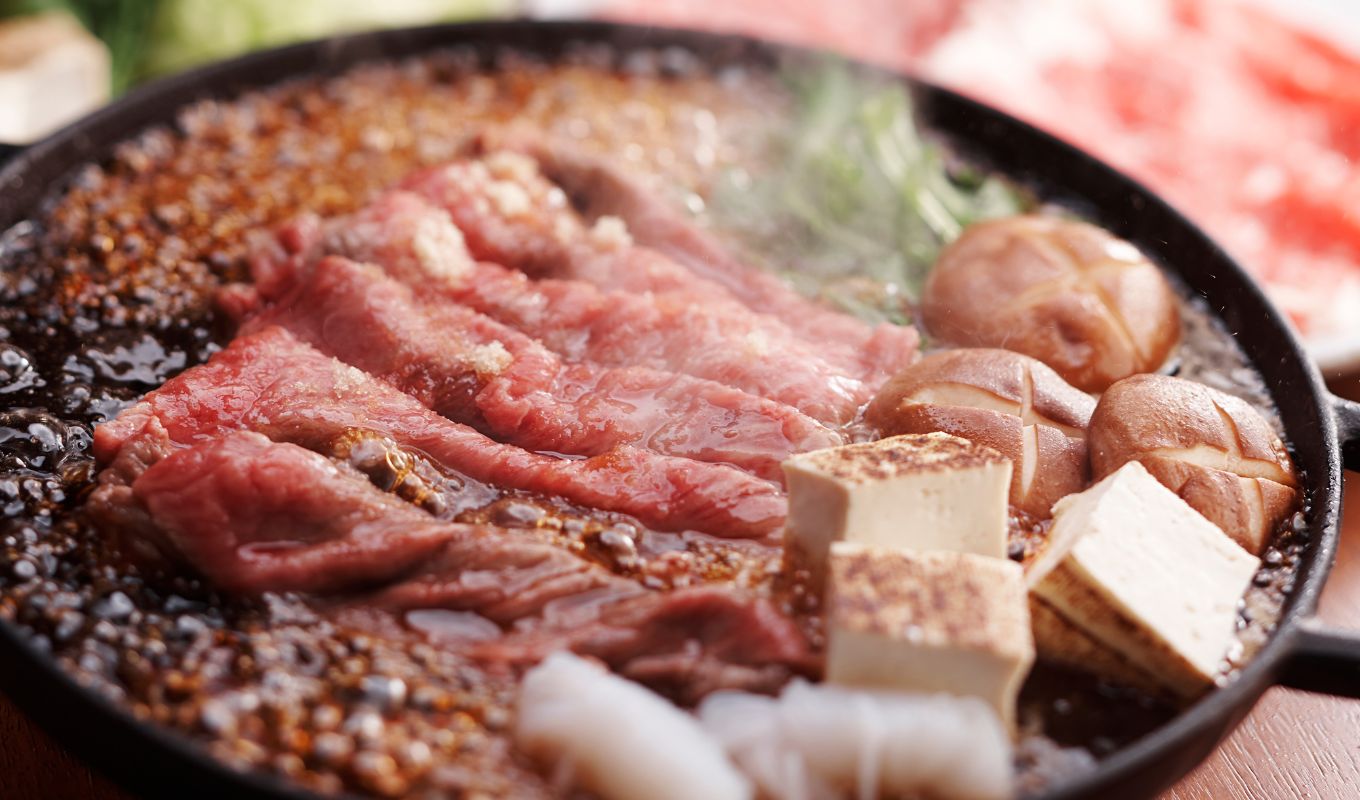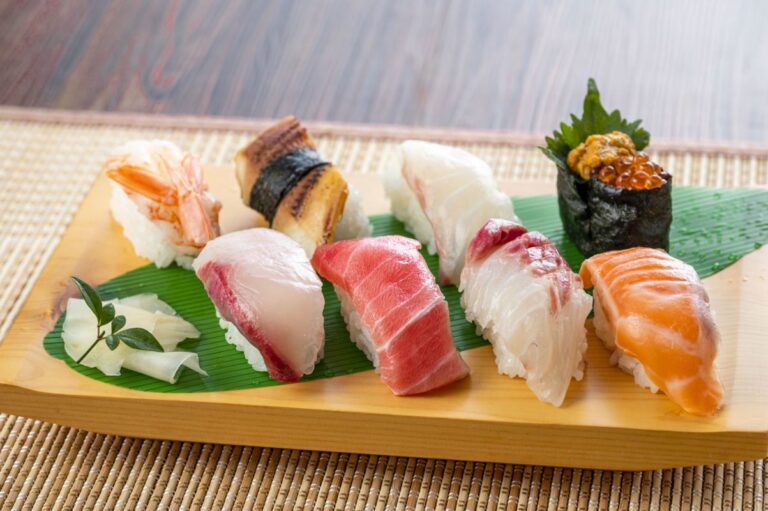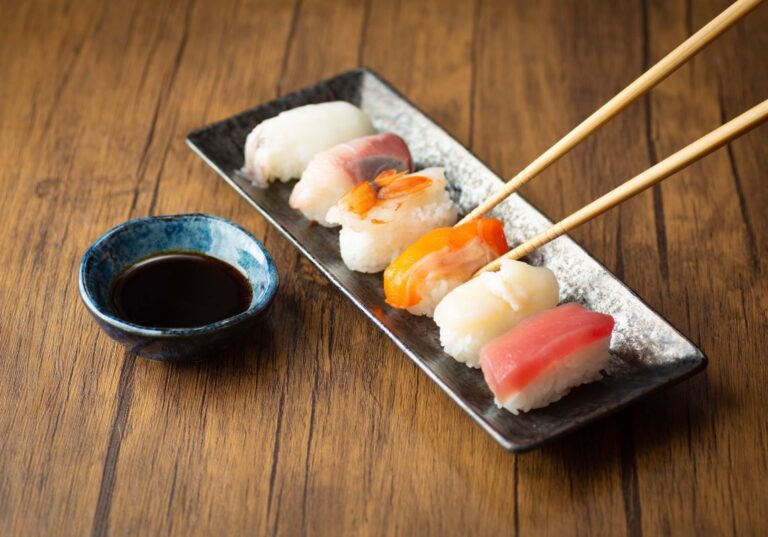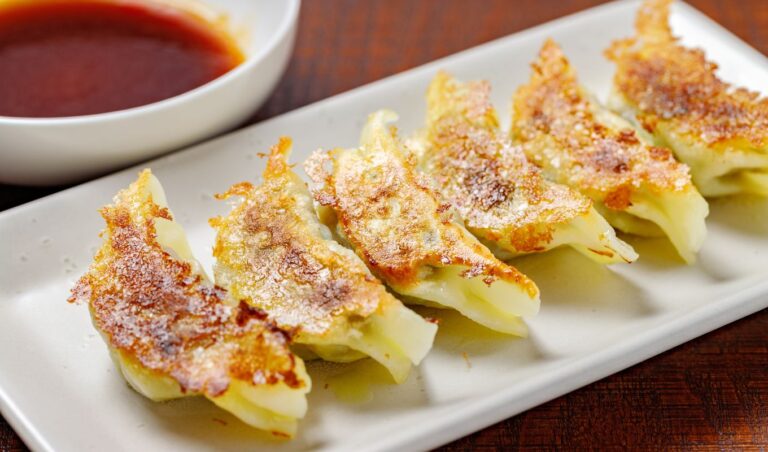Sitting on the floor and gathered around a low-to-ground table, you and a group of friends hold your chopsticks anxiously above a pot positioned directly in the center of the table. As you’re enjoying the company and conversation, your meal is cooking right on the dining table, on a small portable stove! Once the beef, tofu, noodles, and vegetables have finished cooking, a friendly competition ensues where you each take turns reaching into the pot with your chopsticks to claim the finest choices!
Some restaurants claim they’ll make food “how you like it,” but in Japan, the dish sukiyaki literally means “sautéed [or grilled] as you like it.” A popular dish in Japan in the cold months, sukiyaki is so named because meat or tofu is sautéed in a pan or simmered in a hot pot along with a wide variety of accompanying ingredients. (You choose the ingredients “you like.”) Sukiyaki is a common nabemono (“cooking pot things”) meal in Japan, which are sometimes called “steamboat” or “one pot” dishes in English.
History Of Sukiyaki
You may hear the tale of a Japanese aristocrat who, on a return trip from hunting, demanded that a peasant cook his prey for him and the peasant developed sukiyaki by grilling the meat on his suki (spade). But sukiyaki’s true roots trace back to the late 19th century after Japan once again opened its ports to foreign visitors.
Although cattle and beef have existed in Japan since the 2nd century, due to Buddhist principles, Japanese agriculture, and Japan’s maritime borders, the Japanese diet at the time consisted primarily of seafood, starches, and vegetables. Westerners convinced the Japanese to more frequently add foods like beef, milk, and eggs to their diet. Sukiyaki developed as a Japanese way to cook these foods in a familiar style. (Previous nabemono dishes included the common seafood, vegetables, and starch ingredients.)
Preparing Sukiyaki
Although different regions of Japan have their own ways of preparing sukiyaki, there are two primary methods of making the dish: completely in the pot or on a skillet. The first method (called the Tokyo, or Kanto, method) requires a shallow cast iron pot filled with sukiyaki sauce, which is a mixture of sake, sugar, soy sauce, raw eggs, and a rice wine called mirin. The cook adds thinly sliced beef and then slowly adds his or her choice of tofu, scallions, mushrooms, noodles, Chinese cabbage, and shungiku (leaves from a type of chrysanthemum). The ingredients slowly simmer and are served dipped in a raw egg.
The second style of preparing sukiyaki (called the Kansai method) requires a skillet. The thin strips of beef are completely cooked on the skillet in beef fat before any other ingredients are added. The beef is then covered in sugar and sukiyaki sauce and whatever other ingredients the cook prefers (usually the same ingredients in the Kanto method). The rest of the ingredients then simmer for a time until cooked.
The Beef
Although tofu can be the main ingredient of sukiyaki for vegetarians, beef really is the staple of the dish. The kind and cut of beef is essential to making delicious sukiyaki. Beef in sukiyaki should be very tender. The best beef for the dish is the expensive shimofuri beef, which has a lot of fat. However, most people can’t afford to use shimofuri each time they make sukiyaki.



